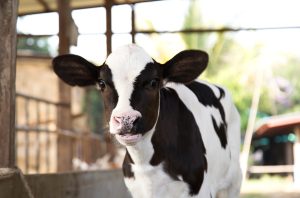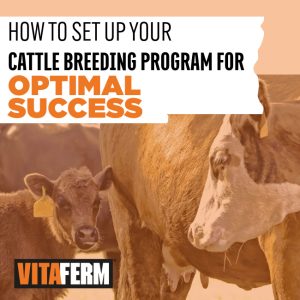
Fly Control Mineral for Cattle
Good things don’t always come in small packages. Take the fly for instance. Tiny little flies cost the beef industry more than a billion dollars each year. If you break that down, flies can cost you, the producer, $30-$50 per pair if you are not engaging in effective fly control management.
Using a fly control mineral for cattle is one preventative measure for minimizing fly pressure. However, there are several great mineral options out there, and they are most effective when used synergistically with at least one other fly control method. The great thing about cattle production is that producers do have options.
Why is Fly Control for Cattle Important?
Fly control for cattle is important for several reasons. Let’s explore five reasons why you should invest in fly control mineral for cattle.
1. Animal Welfare
Flies can cause significant distress to cattle. Flies bite and irritate the animals, leading to discomfort, stress and potential health issues. This can negatively affect the well-being of the cattle, impacting their behavior, weight gain and overall health.
2. Health Management
Flies transmit diseases and parasites to cattle. For example, stable flies and horn flies can transmit various pathogens and parasites that cause diseases such as anaplasmosis and summer mastitis.
Controlling fly populations helps reduce the risk of disease transmission and minimizes the need for medical interventions. This means less spent on treatments like antibiotics or vaccines.
3. Production Efficiency
Fly infestations can reduce cattle productivity and efficiency. Cattle spend a significant amount of time and energy trying to relieve the irritation caused by flies, which can reduce their feed intake, weight gain and milk production.
By controlling fly populations, cattle can allocate more energy toward growth, reproduction and milk production. This improves overall efficiency and profitability for cattle operations.
4. Environmental Management
Fly populations can also impact the environment surrounding cattle operations. Large numbers of flies can create nuisance issues for both animals and humans in the vicinity. Furthermore, fly breeding sites, such as manure piles, can contribute to environmental pollution and unpleasant odors.
Effective fly control helps mitigate these environmental concerns and maintains a healthier environment for both cattle and humans.
5. Cost Savings
Implementing fly control measures can result in cost savings for cattle producers. While initial investments may be required for fly control products and management strategies, the benefits in terms of improved animal health, productivity and environmental management can outweigh these costs over time. Additionally, preventing disease outbreaks and reducing the need for medical treatments can help minimize veterinary expenses.
Overall, fly control is an essential component of cattle management practices. It contributes to animal welfare, health management, production efficiency, environmental sustainability and cost-effectiveness in cattle operations.
The great thing about cattle production is that producers have options.
Fly Control Options
There are several fly control options available to producers. We recommend feeding a fly control mineral for cattle in conjunction with at least one other protocol for best results.
Feed Additives
Some feed additives contain insect growth regulators (IGRs) or larvicides that pass through the digestive system of cattle and prevent the development of fly larvae in manure. These additives can help reduce fly populations at the source.
At BioZyme®, we make several fly control mineral options for cattle that include ClariFly®. ClariFly is a four-fly larvicide that prevents house flies, stable flies, face flies and horn flies from developing in and emerging from the manure of treated cattle.
The primary benefit of ClariFly is the four-fly claim. Different fly species become pests in different management scenarios. Horn flies and face flies are typically bigger nuisances in the pasture because they seek out fresh, undisturbed manure piles to lay and hatch eggs in. Conversely, house and stable flies are peskier in confinement areas like feedlots, pens, corrals or barns. In these areas, manure build-up exists, and wet, organic matter like feed or hay serves as great places to lay eggs.
The Benefits of ClariFly
According to Gary Felger, Central Life Sciences Regional Sales Manager, research has shown that ClariFly will control up to 96% of the fly population. This is true when fed 30 days before you expect your first flies to arrive and continue to feed 30 days after your first hard frost. Furthermore, it poses no harmful effects to beneficial insects.
Even if you already have flies, it is not too late to start feeding a product with ClariFly, Felger said. The life cycle of a fly is about three weeks. Since the product is passed through to the manure where the eggs are laid and hatched, you should start seeing results in about three to four weeks.
Feeding a fly control mineral for cattle with ClariFly is an efficient, economical way to help control flies. In addition to its four-fly claim, it is a convenient, labor-saving way to control the fly population. You are already feeding minerals. Therefore, this is a convenient method of getting fly control into your cattle, without the labor of spraying or implementing other external methods.
All of the BioZyme products with ClariFly also contain AO-Biotics® Amaferm, a prebiotic research-proven to enhance digestibility. Therefore, you are keeping fly pressure down, while also improving your herd’s health and overall digestibility.
Garlic as a Natural Detractor
Most humans are not attracted to someone with garlic breath. Or with garlic seeping from their pores. That is the effect of providing garlic in your fly control mineral for cattle. Although studies are limited, one Canadian study shows that cattle that were fed garlic powder during prime grazing season carried significantly lower fly loads.
When garlic is ingested, the odor is emitted through the animal’s skin and breath. Flies are repelled by the smell and don’t land on the animals. Garlic, to deter insects, will not kill the flies, but it will help prevent the flies from landing on and biting your cattle.
Some producers have been feeding garlic powder on their own because they like the internal fly control. They feel it might be more impactful than, say, a pour-on or fly spray when animals go stand in ponds to cool off during a hot day. They mix in garlic powder or garlic salt with their free-choice mineral.
Making sure your cattle get enough garlic continuously is key. Keeping the garlic powder on hand and mixing it with your mineral can be a challenge. And remember, we mentioned being proactive. You will want to start feeding garlic at least 30 days before the flies even think about reproducing.
Insecticides
Cattle producers can use insecticides in various forms, including sprays, pour-ons, dusts, and insecticide-infused ear tags. These products are designed to kill adult flies and/or inhibit the development of fly larvae.
Insecticides should be used according to label instructions and with caution to minimize environmental impact and resistance development. Again, you might rotate these within pasture groups so as not to build up resistance. You will also want to use them in conjunction with a second or third fly control method.
Manure Management
Proper manure management is crucial for controlling fly populations. Removing or spreading manure regularly reduces fly breeding sites and limits the availability of organic matter for fly larvae development. Composting manure can also help kill fly eggs and larvae.
Additionally, manure management improves animal welfare and enhances environmental quality. Fly infestations can cause significant stress and discomfort to cattle. Flies can irritate cattle, disrupt feeding and resting behaviors, and lead to skin lesions, reduced productivity and overall welfare issues. Proper manure management helps create a cleaner and more sanitary environment for cattle, reducing their exposure to flies and improving their well-being.
Accumulated manure can contribute to environmental pollution and nutrient runoff, contaminating soil, waterways and air quality. By implementing responsible manure management practices, such as composting, spreading, or properly storing manure, cattle producers can minimize environmental impacts and promote sustainable land stewardship.
Pasture Rotation
Pasture rotation can be an effective strategy for fly management in cattle by disrupting the life cycle of flies and reducing their breeding opportunities. Here’s how pasture rotation helps with fly management:
Reduces Manure Buildup
Pasture rotation involves moving cattle to different grazing areas or paddocks on a rotational basis. By rotating cattle to fresh pastures regularly, manure is distributed more evenly across the landscape rather than accumulating in concentrated areas. This helps reduce the buildup of manure, which serves as a primary breeding ground for flies.
Allows Manure Decomposition
When cattle are rotated to fresh pastures, the manure left behind in the previous grazing area has the opportunity to decompose naturally. Exposure to sunlight, air and soil microorganisms helps break down manure and reduce its attractiveness as a breeding site for flies. Decomposed manure is less hospitable to fly larvae, thereby limiting fly populations.
Disrupts Fly Life Cycle
Flies require moist organic matter, such as cattle manure, to lay their eggs and complete their life cycle. Pasture rotation disrupts the fly life cycle by continuously moving cattle to new areas where fly eggs and larvae may not have established populations. This interrupts the reproductive cycle of flies and helps prevent the buildup of fly populations in specific locations.
Shade and Shelter
Providing adequate shade and shelter for cattle can help minimize their exposure to flies during peak fly activity periods, such as hot summer months.
Genetic Selection
Some research explores the possibility of breeding cattle with inherent resistance or tolerance to fly infestations. This approach is still in its early stages, and there are often more important traits to select from. Selecting traits that make cattle less attractive to flies or more resilient to fly-related stressors could potentially contribute to long-term fly control strategies.
By employing a combination of these fly control options and implementing integrated pest management practices, cattle producers can effectively manage fly populations in their operations. Additionally, you will be promoting animal welfare and environmental sustainability and increasing production efficiency in their operations.
BioZyme Offers Fly Control Mineral for Cattle
Although we have offered several suggestions for fly control, and we do recommend using a combination of methods, at BioZyme, we are animal health and nutrition experts. We have worked to ensure that we can offer producers the best options for their herds to stay economically viable and sustainable.
All BioZyme products are backed by years of research. They contain Amaferm, a prebiotic research-proven to enhance digestibility. We know that 70% of the immune response starts in the digestive tract. If you can keep your cattle’s digestive system healthy, you can keep them healthy.
Our fly control mineral for cattle comes with both ClariFly and garlic, depending on your preference. We also offer mineral in both free-choice and tub forms. At BioZyme, we know our producers follow a variety of management scenarios, so we make fly control mineral for both cow-calf producers and stocker operators.
Ready to Buy VitaFerm Mineral?
Are you interested in the VitaFerm mineral, a line of nutritional supplements for beef cattle that maximize energy and forage utilization for successful production?
BioZyme offers several products for every producer. Not sure which mineral will best suit your operation? Use our Product Navigator tool to discover the best product for your herd.
You can buy VitaFerm fly control mineral for cattle or any VitaFerm product from a BioZyme dealer near you. Find your local dealer today.
Sign Up for Our Newsletter
Want more educational information to enhance the productivity and profitability of your herd? Sign up for our email newsletter.


